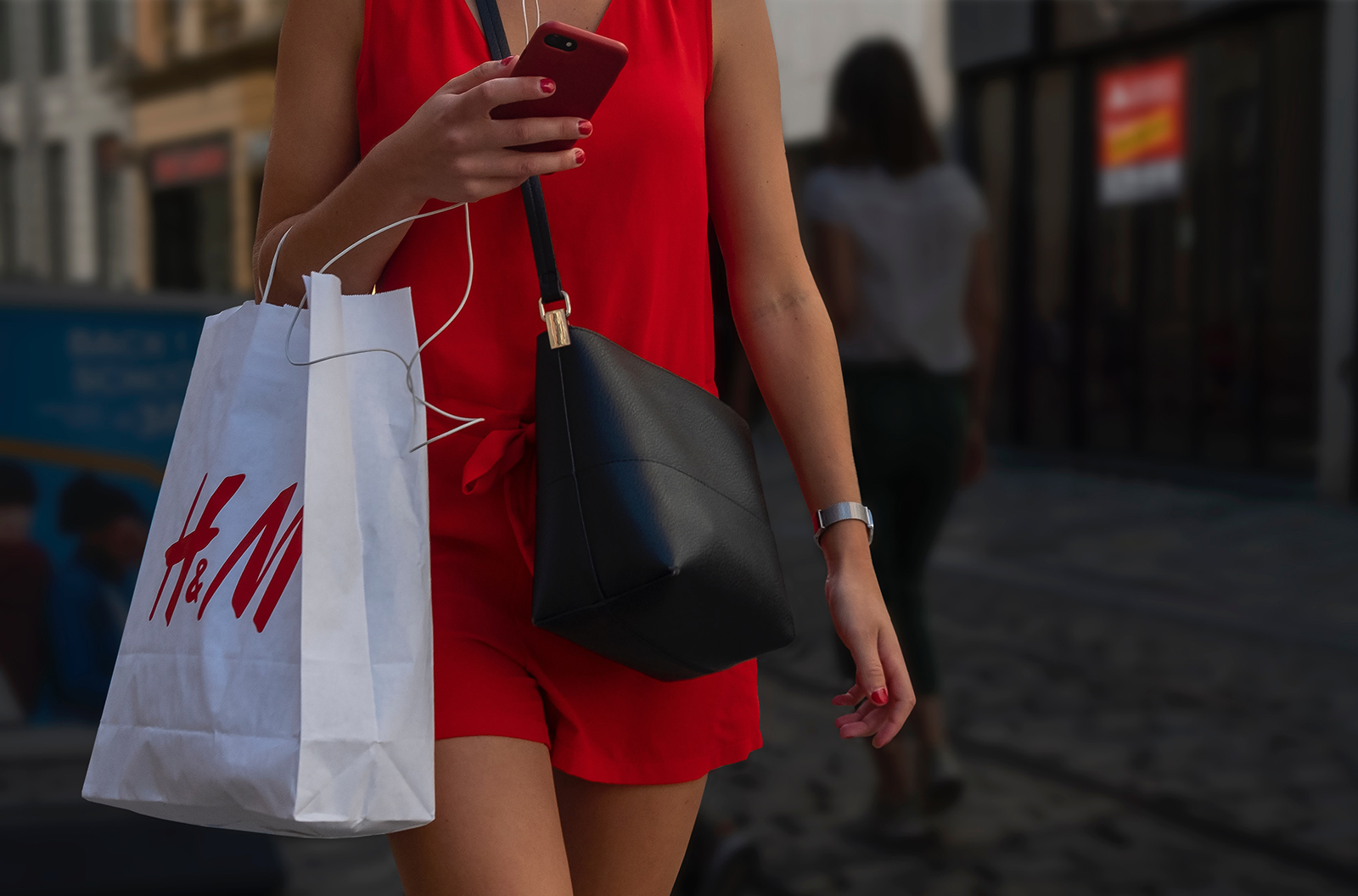Every e-commerce store owner wants to increase their website conversion rate. Indeed, your website conversion rate is arguably the most important metric when it comes to determining how well your business is doing.
However, the conversion rate is not a straightforward concept. It is more than just dividing the total number of site visitors per session with the number of visitors who purchase a product.
On the contrary, many things influence a site’s conversion rate. Factors such as user experience, customer support, pricing, and others determine whether a visitor will undertake a conversion action. Even the type of action they will undertake depends on where they are in their buying journey.
As such, improving your website conversion rate for your e-commerce website requires you to optimise all aspects of the site to encourage as many site visitors to convert from browsers to buyers.
While the exact number will vary from business to business and across different industries, a good conversion rate ranges between 1 and 3 percent.
Are you struggling with low conversion rates? Are your conversion rates plateauing? Do you want to take your e-commerce game to the next level?
From implementing product listing videos to making use of augmented reality technology, this article will let you in on the most recent, tried-and-tested strategies for increasing your e-commerce website conversion rates.
Website Conversion Rate Increase with Exit Pop-Ups and Polls
Users leave websites and abandon carts for many reasons including high shipping costs, a complex checkout process, sheer distraction, or lack of customer support, just to mention a few.
The time between a user browsing your website and them showing an intention to exit offers a small window of opportunity to re-engage, keep them on the site longer, and encourage conversion.
Exit pop-ups are nothing new but if you are not using them, you could be losing money. A well-thought-out pop-up creates a sense of urgency and offers the visitor one last chance to make a decision.
Admittedly, some of the people who exit your website are just casual browsers but others could be potential clients with a significant purchase intention and only need to be nudged in the right direction.
That nudge is an exit pop-up.
You do however need to bear in mind some best practices to ensure that your pop-ups deliver the right conversion outcomes.
Here are a few tips for implementing exit pop-ups:
Offer significant value
To convince a visitor who was intending to leave to stay on your site, you must offer them something they had not seen before while they were browsing the site. Use the exit pop-up to present them with an irresistible offer that will encourage them to stick around longer or to make a purchase.
Customise your message
With advances in exit intent technology, your exit pop-ups can be tailored to each visitor’s unique buying journey. The more relevant the message is to a visitor who is about to exit, the more likely they will be compelled to hang around longer and perhaps take you up on your offer. For example, a visitor who abandons their cart would need to see a completely different message from one who had been clicking through products and related items because they are in different stages of the buying journey.
Make it easy to decide
One reason why visitors exit an online store is that they feel overwhelmed or confused and are unable to make a purchase decision.
An exit pop-up is a great opportunity to simplify the decision-making process for them.
Again, you will have to consider where they are in the buying cycle and their purchase intention for you to present an offer or message that will nudge them to make a decision.
Ask for few details
Exit pops can be useful when it comes to collecting visitor information, which you can then use later to nurture them further down the funnel for an eventual conversion. However, bear in mind that at this point, the visitor is ready to leave and asking for too much information here will only encourage them to exit. For the best results, ask for the bare minimum, which is usually an email address.
Include a call to action
An exit pop-up, like a landing page, is no good without a call to action that really compels the visitor to take the next step. Instead of the standard “sign me up’’ CTA, come up with something exciting that reflects your brand tone and personality to really excite the customer and get them to take a certain action.
Create a sense of urgency
An effective way to minimise cart abandonment and website exits is to show the visitor what they will be missing. For your exit pop-ups to be effective, users need to make a decision now or they will miss something important.
Website Conversion Rate Increase with Chatbots
Automated chatbots are all the rage and for good reason, especially for online stores that are looking to improve conversions.
A major reason why visitors leave a site without purchasing is that they simply do not have enough support and guidance to feel like they are making the right decisions.
Enter chatbots…
These pieces of software automate the customer service function of your business by answering customers’ questions and helping them along their buying journey. Site visitors are less likely to exit and more likely to buy when they feel guided and supported.
With exciting advances in technology, you can implement a chatbot with your brand’s personality and tone, and offers visitors a humanised experience, which allows them to be more at ease when it comes to making online purchases.
Like a human assistant, you can easily program your site chatbot to ask customised questions to understand visitors better. This way, you can tailor products to users’ needs and in turn increase conversion rates.
Website Conversion Rate Increase with Augmented Reality
Imagine, just for a moment, if you could see in real-time how a product you are considering buying would look like in a certain space in your house.
Or how that outfit or new colour of nail polish would look on you before you even buy.
With the dawn of augmented reality (AR), you no longer have to imagine; it is entirely possible. Indeed, AR is solving one of the most difficult hurdles in e-commerce—the ability to physically experience a product before deciding to purchase it.
 Reports indicate that in 2019 only, 68.7 million people in the US alone will use AR at least once per month but this number is set to grow in the coming years as the technology becomes widespread.
Reports indicate that in 2019 only, 68.7 million people in the US alone will use AR at least once per month but this number is set to grow in the coming years as the technology becomes widespread.
Other findings show that up to 29 percent of consumers prefer to view products via AR before buying while 41 percent expect retailers to implement AR technology to remove the physical hurdles of online shopping.
Where conversions are concerned, AR is a game changer as it allows users at the final stages of the buying cycle to not only purchase conveniently at home but to also experience what they want to purchase.
Although the technology is relatively new, you can use AR in different ways to improve your e-commerce website conversion rates. Two popular ways that brands are using AR include offering virtual fitting rooms and preview placements.
With virtual fitting rooms, customers can use their own photos captured using a smartphone to test how well an object such as a piece of jewelry, clothing, makeup, or any object would look on them without having to go to the actual store or worrying about buying a product that will end up not looking great.
Preview placements are popular with shoppers looking to sample high-budget items such as furniture. With this feature on your website, customers only need to select the item they want to buy, direct the phone camera to the location in their house where they want to place the object, and see how well it fits in the selected location.
The ability to test and sample products without leaving the comfort of their home can be the difference between a shopper buying and deciding to postpone or prolong their purchase decision.
The good news is that you do not need to be proficient in AR to take advantage of all the perks this technology offers. Many digital agencies can now implement your vision for your e-commerce store and creating a stunning brand experience.
Website Conversion Rate Increase with Video
There is no denying the power of video as a medium for reaching and engaging customers. In every region of the world, customers are watching more videos than ever across all devices.
The numbers do not lie either. Studies show that up to 54 percent of users want to see video content from their favorite brand.
Additionally, 88 percent of marketers are happy with the ROI of their video marketing efforts. Interestingly, 93 percent of marketers say they have acquired a new customer due to their video marketing efforts, especially on social media.
Against this background, it is easy to see that, when done right, e-commerce and video can be a match made in heaven. Site visitors who watch videos of a product are more likely to have greater purchase intent than those who look at static pictures.
You can use video in different ways to improve website conversion rates.
Product listing and social ad videos
Product images are a no-brainer for an e-commerce site but creating compelling videos that showcase the best features of each product on your site can be a game-changer.
Other than on-site product listing videos, you can use the power of social video ads to drive traffic and leads to your website.
Unsurprisingly, of all the social ad formats, video has the highest click-through rate (CTR) and users who watch a video ad on social media take at least one action, which can include visiting the website, looking up the company in the video, or purchasing a product from the company.
Abandoned cart videos
Cart abandonment is one of the biggest challenges in the e-commerce industry. Personalised video content can, however, be a powerful way to encourage visitors who abandon their carts to complete the checkout process.
With today’s email marketing tools, you can quickly create videos for each of your site visitors based on where they are in the buying cycle.
For example, if you notice a visitor has abandoned their cart, you could send an initial video reminding them of the abandoned cart. If they do not get back to the checkout process, you could send another video that tells them there is limited stock on this item. Lastly, you could send out a video with an irresistible offer such as a discount that would be difficult to pass up on.
Influencer videos
31 percent of online buyers trust influencers and base their purchasing decisions on recommendations from their favorite influencers.
In an age where consumers trust brands less, using a strong influencer strategy for your e-commerce business can make a world of a difference in terms of lead generation, conversions, and actual sales.
So, in addition to featuring product videos on your site, consider partnering with influencers whose video content you can also feature to excite and encourage customers to buy from you.
Ecommerce strategies
Like most things in the online world, e-commerce trends are constantly changing alongside consumer demands.
While static product images were the standard in the recent past, e-commerce stores that have not yet adopted video listings and augmented reality are lagging behind and losing out to competitors.
To stay ahead of the curve and enjoy good conversion rates, be ready to implement new strategies and technologies that are in line with your business objectives.








Leave a Reply